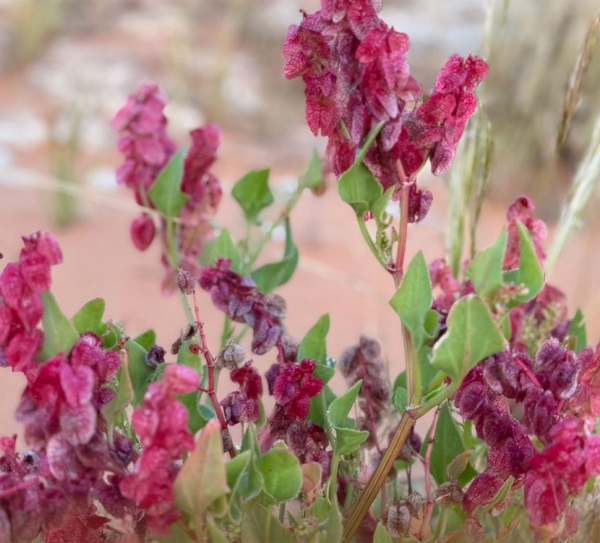
Ruby Dock or Bladder Dock (Rumex vesicarius) is a species of annual flowering plant in the family Polygonaceae. The plant grows in the Kingdom of Saudi Arabia. It is a type of foliage plant. It is dubbed as both leaf and legume. It is a seasonal plant with a short lifespan. and it experiences wilting when exposed to summer heat, thus earning the description of an annual plant. Foliage plants are known as annual plants or seasonal plants. These plants cover the desert in spring and during the rainy season.
Characteristics of the ruby dock
Ruby docks grow in waterways during spring. The plant bears a red fruit and is considered a male legume. The ruby dock is known for its reddish flowers that resemble a rooster comb. Ruby docks are about thirty cm high, with six cm long and four cm wide leaves. Its flowers form clusters at the plant's extremity. The plant features a winged yellow-reddish achene that can reach up to two cm in width. Ruby docks grow in inland plains, on the slopes of the eastern Hejaz Mountains, in shallow sands, and in rocky sites. In the desert, these plants are known as bladder docks. They are known as Rumex in central Najd and the "Old Man's Tooth" north of the Kingdom. The plant's leaves and flowers are eaten fresh as appetizers. They have a sour flavor. It is believed to be cooked with meat and used to make other dishes upon mixing it with milk.
Uses of ruby docks
Ruby docks are rich in vitamins. Some use the plant as a laxative. It bears some side effects for people with kidney diseases. It is used in traditional medicine to treat various diseases and illnesses. The docks' leaves contain citric acid, potassium acids, and tartaric acid. In some cases, the citric acid content of ruby docks is sufficient to cause poisoning. Under specific circumstances, it could cause skin infections among allergic individuals.
Related quizzes
Related articles


